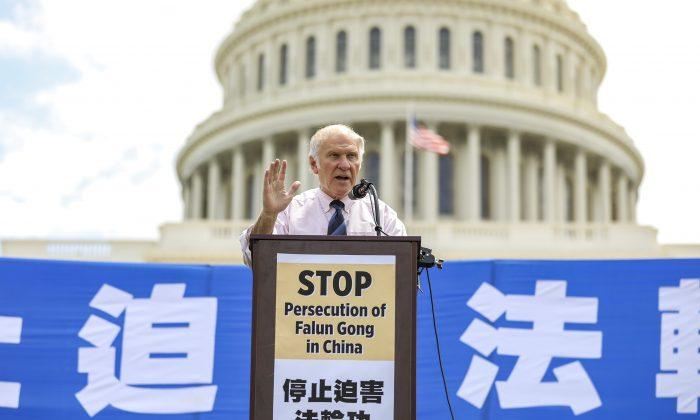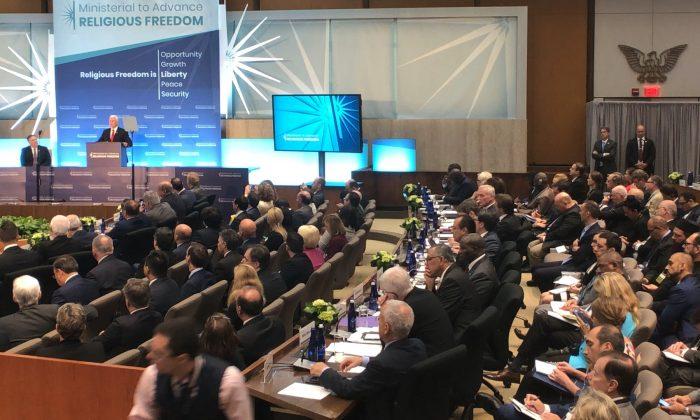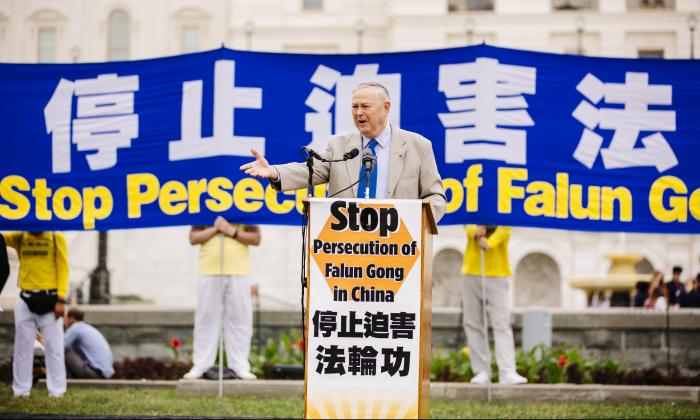WASHINGTON—The importance of Mexico to the United States is evident in our debates on immigration reform and free-trade agreements. As 10 percent of the U.S. population is of Mexican origin, it was almost inevitable that our neighbor to the south would play a vital role in the nation’s social and political consciousness. Emotions run high regarding immigration reform, border security, and trade.
The bilateral trade relationship was the focus of a forum on Feb. 27, where two leading experts on Mexico vigorously defended the North American Free Trade Agreement’s (NAFTA) impact on the economies of Mexico and the United States, wanting to see work begin in earnest for the next phase.
The forum was held under the auspices of NDN, a think tank and advocacy organization based in Washington, D.C., whose major areas of study include programs looking at globalization, macro-economic policy, and Latin America.
It has been 20 years since NAFTA went into effect in 1994, and both supporters and critics agree that the period has seen massive changes—some good, some bad—in both countries. It has become a controversial issue in the debate over free trade agreements with Asian and European countries, which are now under negotiation.
No one can deny the growth of our bilateral trade with Mexico, although many dispute whether it has been a net gain for American workers. Mexico has become our second-largest export market, behind Canada and ahead of China. Mexico is our third-largest trade partner in imports, after China and Canada, according to U.S. Census Bureau data cited by an NDN backgrounder document.
President Barack Obama has made five trips to Mexico in his presidency, with the most recent on Feb. 19 to a meeting with Mexican president Enrique Peña Nieto in the industrial city of Toluca, about 40 miles from Mexico City. The other member country in the trilateral relationship, Canada, was represented at the Toluca meeting by Prime Minister Stephen Harper.
In early February, U.S. Secretary of Commerce Penny Pritzker chose Mexico for her first trade mission, traveling to Monterrey and Mexico City. Accompanying Pritzker were representatives from 17 major U.S. businesses, according to NDN.
“[Mexico] is clearly a priority for the [Obama] administration,” said Eric Farnsworth, vice president of the Council of the Americas and Americas Society, at the forum.
Opposition to NAFTA at Home
The host of the forum, Nelson Cunningham, noted that Obama, in his speech and answers to press questions at Toluca, never uttered the word “NAFTA.” Cunningham is president and a co-founder of McLarty Associates and in 1998, served in the White House as special advisor to President Clinton on Western Hemisphere Affairs.
The president is undoubtedly aware that public opinion polls show that NAFTA and similar free-trade agreements are unpopular, even among his own party. An Angus Reid Public Opinion poll conducted online in May 2012 found that only 15 percent of Americans believe that the United States should continue to be a member of NAFTA under the current terms, and 53 percent said that the United States should either do whatever is necessary to leave NAFTA or renegotiate the terms.
Only 15 percent of poll participants want to continue with NAFTA as it is, only one-third (34 percent) said that NAFTA has benefited the American economy, and still less (25 percent) think it has benefited workers.
Currently the administration is fighting hard for a new free-trade agreement with 12 Pacific nations called the Trans-Pacific Partnership (TPP), in which Mexico and Canada are included. The TPP would expand the scope of NAFTA.
Last month, Public Citizen published a comprehensive report, written by research director Ben Beachy, highly critical of NAFTA. It stated: “Millions have suffered job loss, wage stagnation, and economic instability from NAFTA. Scores of environmental, health, and other public interest policies have been challenged. Consumer safeguards, including key food safety protections, have been rolled back.”
This forum only considered the alleged job loss.
NAFTA Advocacy
One of most vocal proponents of NAFTA is Shannon O’Neil, senior fellow for Latin America Studies at the Council on Foreign Relations and author of “Two Nations Indivisible: Mexico, the United States, and the Road Ahead” (Oxford University Press, 2013).
“If you look at any serious economic studies of what NAFTA has [done], there are widespread benefits and there are very concentrated losses,” O’Neil said at the forum.
O’Neil asked the question of where the United States would be in the absence of this agreement.
“Would we still see today if we had not signed: apparel made in rural Massachusetts, carpets in the Carolinas, or drill bits in Cleveland, Ohio? … The answer is ‘no,’ because all these things today are made in China with whom we do not have a free-trade agreement,” she said.
Ronald Brownstein, editorial director at Atlantic Media, wrote in the National Journal on Feb. 20: “In a relentlessly globalizing world, most jobs that moved to Mexico since NAFTA would likely have shifted to some lower wage country.”
O’Neil had more to say about if NAFTA had never come to be.
“Now if we had not signed NAFTA, do you think we would see cars made in Detroit? Airplanes and jets made in Kansas City? Tractors in Peoria, Illinois?” she said. “The answer is probably ‘no.’”
In a recent article in Foreign Policy magazine (Feb. 17), O’Neil stated that the annual intra-regional trade between the United States, Canada, and Mexico is more than $1 trillion, and that 14 million jobs depend on this relationship, which is 5 million more than pre-NAFTA days in 1993.
Like other NAFTA advocates, O’Neil conceded that jobs have been lost, particularly for “the less-educated and lower-skilled workers.” But she said that more jobs have been created because the growth of global trade allowed expansion globally.
The Mexican economy has been transformed by NAFTA. “GDP has more than doubled from $510 billion to $1.178 trillion in 2012,” stated the NDN backgrounder.
Pre-NAFTA, Mexico was a closed economy based on agriculture and commodities, according to O’Neil. Today, it has become an economy of manufacturing and services and “one of the most open commercially,” she said. In addition, it has become a vibrant democracy.
Interconnected Supply Chains
An important point that O’Neil, Farnsworth, and Brownstein made is that for every dollar spent on U.S. imports from Mexico, on average 40 cents originated in the United States. The U.S. share of 40 percent of value with Mexico compares to 25 percent with Canada and only 4 percent with China.
“Of the nearly $277 billion in goods imported from Mexico in 2012, $111 billion was actually made by U.S. workers,” wrote O’Neil. Contrast that with China. Of the $425 billion in imports from China, less than $17 billion was made in America.
Since the signing of NAFTA, the nature of production has shifted away from finished products, where Canada, Mexico, and the United States have interconnected supply chains, she wrote. More manufacturing in Mexico means more jobs in the United States.
“[NAFTA] has helped the United States to remain competitive globally so that we have regional supply chains that allow us to compete with China [and others],” said O’Neil. “That fundamentally is what NAFTA has done.”




